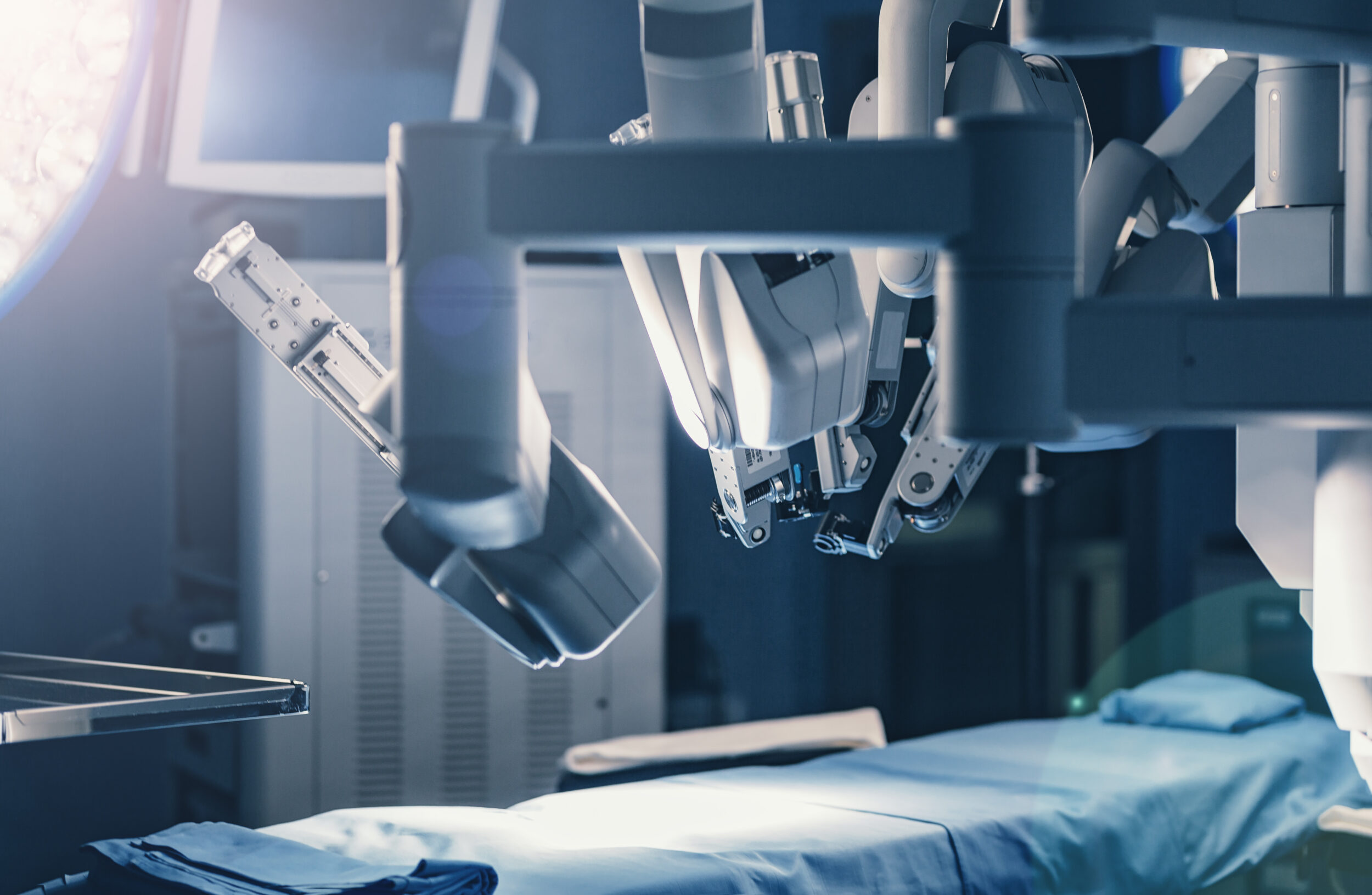When facing issues with the male reproductive system or urinary tract, the idea of surgery can be intimidating. Many men worry about the procedure's impact on their bodies and lives, given the delicate nature of these areas.
Traditional urologic surgeries require significant incisions, which can lead to painful recoveries and potentially long-term effects on vital functions like continence and sexual health.
At the Greater Hartford Urology Group, our team includes skilled doctors specializing in various urology services, including robotic surgery. Robotic urologic surgery can help ease some of your concerns by providing a safer alternative to traditional surgery.
What Is Robotic Urologic Surgery?
Robotic urologic surgery is a minimally invasive surgery that uses robotic systems to perform precise surgical procedures on the urinary tract and male reproductive organs. This technology is revolutionizing the field of urology by providing safer, quicker, and less invasive surgical options. The most commonly used system for such surgeries is the da Vinci Surgical System®.

The Da Vinci Surgical System®
The da Vinci Surgical System® revolutionizes surgery with its cutting-edge technology. It’s a minimally invasive system that uses small, precise robotic arms to mimic a surgeon's movements. Surgeons maneuver these arms through tiny incisions, guided by a console that provides a detailed, three-dimensional view of the surgical area. This setup improves precision and reduces recovery time, making it the ideal choice for complex surgeries.
Robotic Urologic Surgery Applications
Patients should discuss with their urologist whether this approach suits their medical condition. Here are some of the most common conditions this type of surgery is used for:
- Prostate Surgery: Robotic surgery is often used for prostatectomies, where part or all of the prostate gland is removed to treat prostate cancer. This technique allows urologic surgeons to operate with better precision so they can preserve more nerve tissue around the prostate. This can help maintain urinary and sexual functions post-surgery.
- Bladder Surgery: Patients who have bladder cancer may undergo a partial or complete cystectomy using robotic surgery. The precision of the robotic system helps minimize damage to surrounding tissues and organs for more focused treatment of the cancerous area and potentially better outcomes.
- Kidney Surgery: Robotic surgery can also be used for various kidney disorders, including kidney cancer or benign kidney conditions. Your surgeon may use it for procedures such as partial nephrectomy (removal of part of the kidney) or complete nephrectomy (removal of the entire kidney). The robotic approach removes diseased tissue while preserving as much of the kidney as possible.
Benefits of Robotic Urologic Surgery
Robotic urologic surgery, especially with the da Vinci Surgical System, brings plenty of advantages to patients. Key benefits include:
- Minimized Incisions: The technology enables surgeons to make smaller incisions than traditional surgery, which means less impact on your body.
- Reduced Pain: Patients typically experience significantly less pain during recovery due to the minimally invasive nature of the surgery.
- Minimal Scarring: Smaller incisions also result in less scarring, so you’ll heal faster and have a better aesthetic outcome.
- Decreased Blood Loss: The precision of robotic surgery helps control and minimize blood loss during operations.
- Lower Infection Risk: With smaller incisions and less exposure of internal tissues, there's a lower risk of infection.
- Faster Recovery: You’ll be able to return to normal activities quicker thanks to the less invasive technique.
How Is the Procedure Performed?
Robotic-assisted surgery involves the following steps to ensure precision and safety:
- Anesthesia Administration: You’ll receive general anesthesia, so you’re unconscious and free of pain during the surgery.
- Incision and Setup: The surgical team makes small, precise incisions near the surgical site, allowing for the insertion of the robotic instruments and a high-definition 3D camera.
- Robotic Instrumentation: The da Vinci system’s robotic arms, equipped with surgical tools and a camera, are positioned to begin the procedure. The camera sends back a magnified, three-dimensional view of the area to be operated on.
- Surgeon Control and Operation: The surgeon controls the robotic arms from a console in the operating room. These controls mimic natural hand movements, providing an intuitive interface for the surgeon to perform the surgery accurately.
- Procedure Execution: Under the careful guidance of the surgeon, the robotic arms carry out the surgery. The surgeon monitors the procedure through the 3D view, adjusting the robotic movements as needed.
- Completion and Closure: The robotic instruments are removed after the procedure, and the incisions are closed with sutures. This typically results in minimal scarring due to the small size of the incisions.
What to Expect After Robotic Urologic Surgery
Recovery Timeline
Patients typically return home within a day or two following robotic urologic surgery, with initial recovery lasting one to two weeks. During this time, you may experience mild discomfort and fatigue, but you can gradually resume light activities. Full recovery, including returning to work and engaging in more strenuous activities, generally takes three to six weeks.
Managing Postoperative Pain
Postoperative pain is usually minimal due to the smaller incisions used in robotic surgery. We’ll typically prescribe medications for pain, which are reduced as recovery progresses. Please tell us about any discomfort you have so we can adjust your pain management plan as needed.
Monitoring and Follow-Up Care
Follow-up visits are important so we can monitor healing and manage any complications. These appointments may include imaging tests to check the function of the treated organs. You should follow all postoperative instructions and keep all scheduled follow-up appointments.
Why Choose the Greater Hartford Urology Group?

As one of the top urology clinics for robotic surgery in Connecticut, the Greater Hartford Urology Group is renowned for its expertise in minimally invasive surgical treatments. Our board-certified urologists use advanced robotic systems like the da Vinci Robotic System to enhance surgical precision and patient outcomes.
With convenient locations in Hartford, Glastonbury, and Enfield and the availability of telemedicine consultations, it’s easier than ever to access our top-quality care. We offer urological services that address a wide array of conditions, from cancer treatments to chronic issues like kidney stones and incontinence. Our approach is always patient-centric – we want to build trust with everyone who visits us so they feel reassured during their healthcare journey.
The da Vinci Surgical System®
Robotic-assisted surgery can be performed with the da Vinci Surgical System®, a state-of-the-art console that provides the advantages of minimally invasive techniques along with more precise procedures. The da Vinci Surgical System allows surgeons to perform complex procedures through robotic arms that mimic the movement of their own. These arms are inserted into the body through tiny incisions and then guided to the area to be treated. The surgeon can view the area through a lens in the console that offers a three-dimensional, magnified view, allowing for more precise procedures.
Frequently Asked Questions
How Should I Prepare for My Visit?
Preparation for robotic urologic surgery involves several steps to ensure safety and the best outcomes, including the following:
- Medical Evaluation: Have a thorough medical evaluation, including blood tests, imaging studies, and a physical exam to make sure you are fit for surgery.
- Medication Review: Discuss all medications you are taking with your doctor. You may need to stop taking certain medications temporarily.
- Fasting: Fast for at least 8 hours before the surgery to prevent complications during anesthesia.
- Transportation: Arrange for someone to drive you home post-surgery, as you will not be able to drive yourself.
- Post-Operative Care Plan: Prepare your home for recovery. Place essential items within easy reach and consider having someone there to help you.
Who Is a Candidate for Robotic Urologic Surgery?
Ideal candidates for robotic urologic surgery typically include those who:
- Are in a condition where minimally invasive surgery is advisable and possible.
- Have localized tumors or conditions that have not spread extensively, making precise, targeted surgery feasible.
- Do not have medical conditions that significantly increase the risks associated with surgery or anesthesia.
- Have not had multiple previous abdominal surgeries that might complicate the use of robotic instruments due to extensive scar tissue.
Are There Any Contraindications for Robot Urologic Surgery?
Robotic urologic surgery is not suitable for everyone. Contraindications include:
- Severe obesity or conditions that limit abdominal access.
- Certain cardiovascular or pulmonary conditions that increase the risk of anesthesia.
- Previous surgeries that caused extensive scarring, potentially complicating the insertion of robotic instruments.
What Are Myths and Misconceptions About the Surgery?
Myth: Robotic surgery is completely automated.
- Fact: The surgery is performed by an experienced surgeon who controls every aspect of the operation via a console.
Myth: It is riskier than traditional surgery.
- Fact: Robotic surgery typically has a lower risk of complications like infection or bleeding.
Myth: Robotic surgery has a higher rate of surgical errors.
- Fact: Robotic systems enhance the surgeon's ability to perform complex procedures more accurately. The high-definition, three-dimensional view, and highly controllable robotic arms reduce the chance of errors compared to traditional surgery.
Myth: Recovery from robotic surgery takes longer because it's more complex.
- Fact: Patients often experience shorter recovery times with robotic surgery compared to traditional surgery. The minimally invasive approach leads to less trauma to the body, which usually translates into faster healing and less postoperative pain.
Myth: Robotic surgery isn't suitable for older adults or those with complex medical histories.
- Fact: Robotic surgery can be particularly beneficial for older adults or those with complex medical conditions because it is less invasive, has a lower risk of infection, and requires a shorter recovery period. Each patient's suitability for robotic surgery is assessed based on their overall health and specific medical conditions, not just their age.
What Are the Risks of Robot Urologic Surgery?
As with any surgery, there are risks involved in robotic urologic surgery, including:
- Infection
- Bleeding
- Damage to surrounding organs
- Risks associated with anesthesia
How Much Does Robot Urologic Surgery Cost?
Robotic urologic surgery costs more than traditional surgery due to the sophisticated equipment and specialized training required. However, shorter hospital stays and a quicker return to work may offset the overall cost. It's important to consult with your healthcare provider and insurance to understand the coverage and out-of-pocket expenses.
Discover Advanced Urologic Care
Your health deserves the best. Contact the Greater Hartford Urology Group and learn more about our minimally invasive robotic surgeries. We’re here to support you every step of the way. Call (860) 522-2251 to schedule your consultation in Hartford, Enfield, or Glastonbury, CT.


